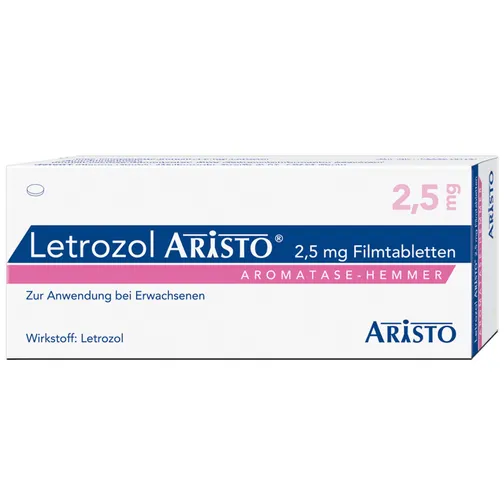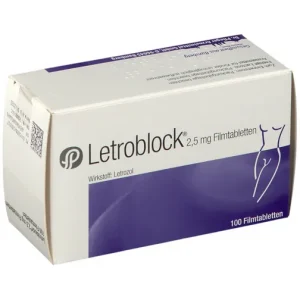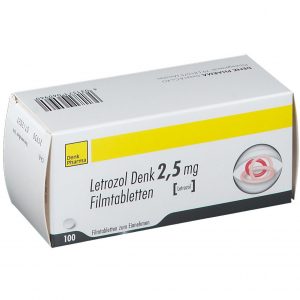Description
Metabolism and excretion
It is metabolised mainly in the liver with cytochrome P450 isoenzymes to the pharmacologically inactive form of the carbinol derivative (4,4′-methanol-dibenzonitrile). Approximately 75 per cent of a dose of letrozole is excreted via the kidneys as the glucuronide of the carbinol derivative, approximately 9 per cent as unidentified metabolites and approximately 6 per cent as unchanged; to a lesser extent, it is excreted via the intestines. The elimination phase half-life (T½) is approximately 48 hours.
Patients in selected age groups: The pharmacokinetic parameters of letrozole do not depend on the age of the patient.
In renal insufficiency, the pharmacokinetics of the drug do not change.
Hepatic impairment: In mild and moderate hepatic impairment (Child-Pugh class A and B), mean AUC values are 37% higher, but do not exceed the range of values obtained for subjects without hepatic impairment. In patients with cirrhosis and severe hepatic impairment (Child-Pugh class C), the AUC increases almost 2-fold and total clearance of letrozole decreases by 47%. However, given the good tolerability of high doses of the drug (5-10 mg/day), no dose adjustment is required.






Reviews
There are no reviews yet.